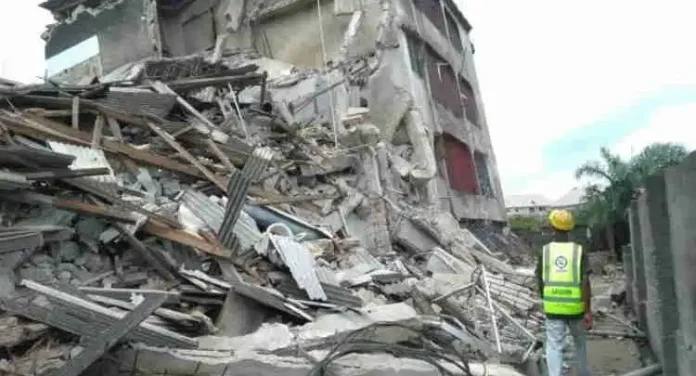Nigeria’s position in the global index of building collapses may not be quick to pinpoint but one thing that is certain is the recurring instances of incidents across the country with Lagos and Abuja taking the lead in this ring of disasters.
It is indeed disturbing that apart from the huge material damage that often follows, priceless human losses often associated sadly evokes deep concern of not a few stakeholders including professionals, NGOs and others, in the built environment.
In Lagos alone, there were no fewer than three reported cases of building collapses in a spate of one month with associated human casualties.
It is in the light of these devastating scenarios that the Building Collapse Prevention Guild, BCPG, recently raised the alarm over the number of deaths caused by building collapse cases nationwide, stating that Nigeria witnessed 1,616 deaths in 653 reported incidents of building collapses between October 1974 and May 25, 2025.
Lagos State accounts for the highest number of recorded building collapse incidents in Nigeria, making up 55.28% of the total, while the Federal Capital Territory, Abuja ranks second with 4.29%, Anambra State is third with 4.13%. Oyo State follows closely in fourth place at 3.37%, and Kano State rounds out the top five with 3.22%. Some states had their first recorded building collapse incidents only recently, according to statistics.
“These include Taraba, Bayelsa, Gombe, and Yobe states, all of which reported their first collapses in 2022. On the other hand, Zamfara, Taraba, Yobe, Bauchi, Bayelsa, Sokoto, Gombe, Katsina, and Kebbi states have each recorded only one incident of building collapse since records began”, according to BCPG.
The Guild noted that there were no recorded building collapses in the years 1971, 1975, and 1981. However, the situation worsened in more recent times. In 2020, Nigeria recorded 45 building collapses nationwide, with Lagos accounting for 18 of them, representing 40% of the total that year.
The year 2022 saw the highest number of collapses ever recorded, with 62 incidents nationwide. Lagos alone recorded 20 of these, amounting to 32%. In 2023, a total of 52 collapses were recorded across the country, with Lagos again leading with 17 cases, equivalent to 33% of the total.
“In 2024, there were 47 building collapses reported across 14 states. Lagos again topped the chart with 13 incidents, followed by Abuja with 6, Anambra with 5, and both Kano and Rivers recording 4 each. Jigawa and Plateau had 3 incidents each, while Osun and Delta reported 2 each. Niger, Abia, Edo, Oyo, and Ebonyi states each recorded one collapse”, the Guild stated.
It added that as of May 2025, 13 building collapses had already been recorded. The first incident of the year occurred in Rivers State on 4th January. Lagos continues to lead with 7 recorded incidents. Ekiti has 2 cases, while Anambra, Yobe, Rivers, and Ogun states have each reported one.
The first recorded building collapse in Nigeria was in Oyo State in October 1974 . It involved a multi-storey building that collapsed due to excessive loading, tragically killing 27 people.
The tallest building collapse in Nigeria’s history occurred on November 1, 2021, in Lagos, resulting in the deaths of 52 people. These statistics were compiled by the Building Collapse Prevention Guild, covering incidents from 1974 to date.
Consequences of building collapse are huge economic losses, huge expenditure to clear the debris, expenses to carry out due diligence to determine the causes of collapse, need for fresh soil investigations, need for re-design, if the site is still available and the client is willing, or loss of the site if in Lagos State.
In several fora, the built environment professionals had called for the enforcement of physical planning regimes towards partly checking cases of building collapse.
Indeed, the preference for quacks against professionals in the overriding intent of cutting corners and saving cost have also been implicated by experts as inclusive of the reasons for the rising cases.
There are no doubt several unreported cases of building collapse though sometimes unintentional that have been missed out in these official statistics but what is imperative is the urgency to navigate a course that would turn the tide for the better.
There is the need for an all-inclusive response to these incidents of collapses where stakeholders in the built environment, including developers who most times are profit-driven are drawn to an emergency summit to deliberate on the way forward.
We once again reiterate that the national building code, which encompasses the fundamentals for erecting structures be enforced across board without delay.
It is worrisome that an estimated 1,616 people have officially been killed in collapsed buildings since 1974 till date.





